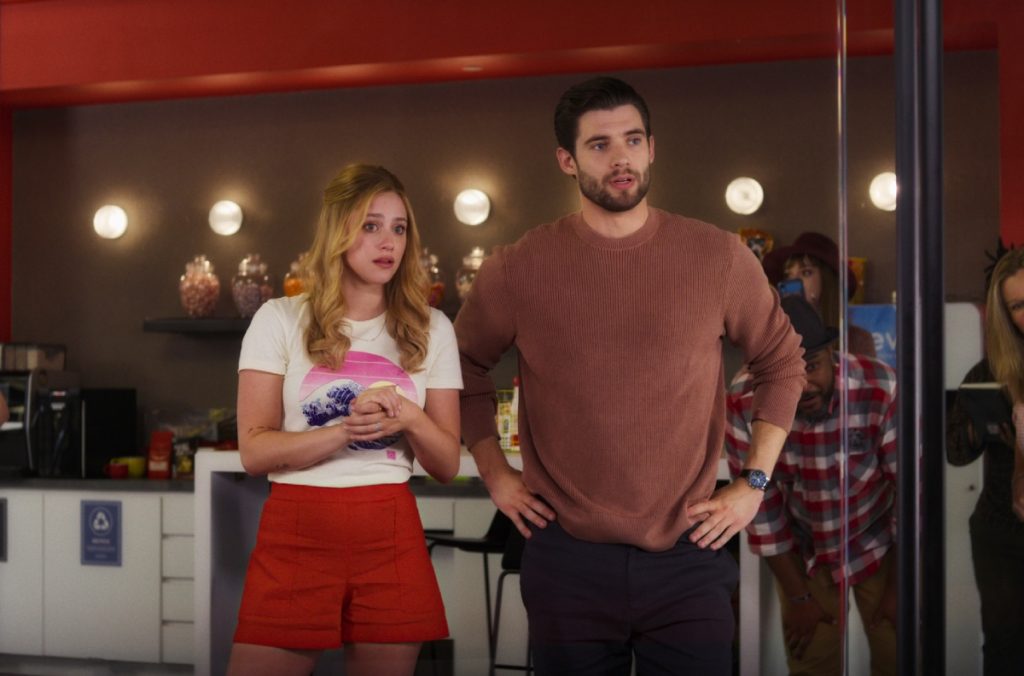A young lady finds herself at a crossroads and two possible lifestyles lay out in front of her in Netflix’s most recent original film, Look Both Ways. There is probably an excellent reason why this idea has been explored in a variety of media. Imagine how many different ways a person might be impacted by certain events or choices. Wanuri Kahiu’s film Look Both Ways, meanwhile, doesn’t pursue this notion to its maximum extent. Look Both Ways fails with either of its competing timelines, despite the best efforts of its star, Lili Reinhart.
Natalie (Reinhart), an aspiring animator, is about to graduate from college and move to Los Angeles until a prospective life shift prevents her. Her close friend Gabe (Danny Ramirez) and she recently engaged in an ill-advised encounter that may have resulted in pregnancy. Two directions then open up. In one, Natalie leaves Los Angeles while pregnant to raise her kid in Texas with Gabe. On the other, parenting isn’t in the cards, so she can start her job straight away with BFF Cara (Aisha Dee). As both Natalies go through life, it becomes evident that certain things are truly meant to be, regardless of the events in the past.
Look Both Ways is introduced by Kahiu, working on a script by April Prosser. Kahiu juxtaposes the two versions of Reinhart’s character while Natalie’s crucial toilet scene unfolds in order to effectively illustrate the impact of the pregnancy (or lack thereof). It has an effect as the camera pans from a happy celebration to a somber reality. From then, Kahiu continues this with varying views of Natalie leaving college behind, occasionally interwoven with animation. Editor Brad Leach skillfully transitions from the more upbeat scenes of Natalie leaving for LA with Cara and the more somber scene of her traveling the other way with Gabe.
The storyline lacks urgency, which might be due to either sluggish pace or straightforward staging. Both of Natalie’s two outings appear to have been imposed upon her rather than serving a crucial purpose for the story. Each narrative’s trajectory is predictable as well, but that isn’t always a bad thing because a well-told known story may be satisfying. On the other side, Look Both Ways has a strong sense of missed opportunity. Natalie’s conflicting lifestyles as a mother and someone with a (allegedly) arduous job may have been utilized by Kahiu and Prosser to put the character in unusual situations.
Although Look Both Ways has its charms, everything turns out exactly as one would expect in the end. The absence of some of the excitement that usually comes with a slice-of-life story like this causes the movie to lose some of its delights. In Natalie’s narrative, which features Reinhart at its core, viewers who prefer straightforward, humorous films may find solace. However, Look Both Ways doesn’t really leave an impression on viewers that will last after the credits have rolled.
